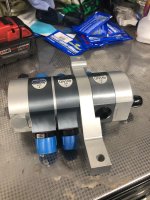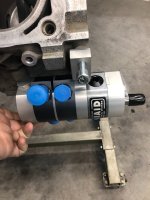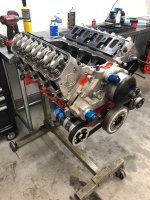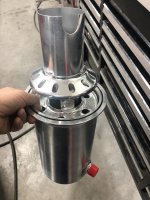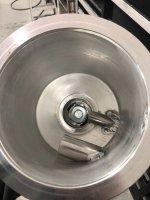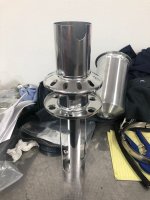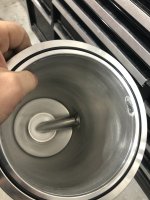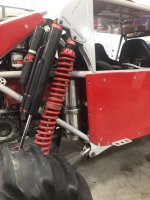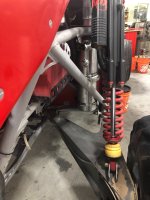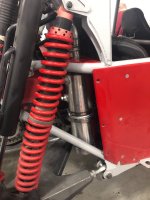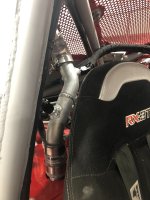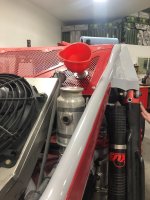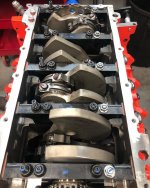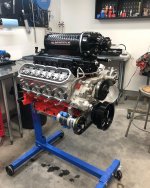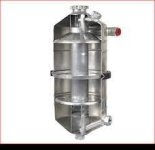J Alper
Site Sponsor
- Apr 30, 2021
- 2,043
- 1,769
As we move forward with Engine builds, I feel like the bigger the cubic inch the harder the oil control, we have moved into a 4.380 crank stroke and it just whips the oil,
Couple of things to think about,
When filling the oil pan, if you do this with water when the pan is on the shelf, when you reach the capacity of the pan, the oil level is almost to the top of the pan, with some larger stroke's the crank will be sitting in the oil before start up,
When oil gets hot, it is like water, the oil is moving around like water is in a pan, take a pan of water fill it to the top and go drive around, that is what is going on in a wet sump, Now get the front tires off the ground or go down a good % of oil is sitting on the crank
Blender time, when the crank is spinning, the cranks has ruff machine marks whipping Air into the oil and over time you will have more Air then oil in this mixture,
Wet sumps need to rest to let the air release from the oil,
Engine heat, the wet sump just collects heat, only way to really cool down the temp is to turn the motor off,
Couple of things to think about,
When filling the oil pan, if you do this with water when the pan is on the shelf, when you reach the capacity of the pan, the oil level is almost to the top of the pan, with some larger stroke's the crank will be sitting in the oil before start up,
When oil gets hot, it is like water, the oil is moving around like water is in a pan, take a pan of water fill it to the top and go drive around, that is what is going on in a wet sump, Now get the front tires off the ground or go down a good % of oil is sitting on the crank
Blender time, when the crank is spinning, the cranks has ruff machine marks whipping Air into the oil and over time you will have more Air then oil in this mixture,
Wet sumps need to rest to let the air release from the oil,
Engine heat, the wet sump just collects heat, only way to really cool down the temp is to turn the motor off,

